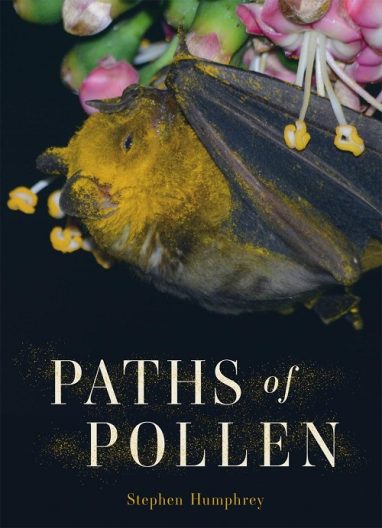
Who would think that a collection of essays on pollen that ends with 23 pages of citations of scientific studies would make fascinating reading for non-scientists? Paths of Pollen wins the prize.
Stephen Humphrey writes of varieties of pollen, of pollinators, of strategies for pollinating, and of many challenges to the process. If you thought honey bees did all the world’s pollinating, he introduces you to the many alternatives – dozens of other kinds of bees, other insects like beetles, animals like bats, even the wind. A few plants even pollinate themselves.
Pollen is tough. Microfossils of pollen survived the Permian Extinction 250 million years ago. Now these fossils have become evidence of the existence of extinct trees otherwise unknown.
Colony collapse, the loss of vast numbers of honeybee hives, made headlines in 2006. Humphrey presents a study suggesting that collapse may not be the most serious problem. Although the cause of collapse remains a mystery, plenty of honey bees survive. Wild bees, on the other hand, face more dire problems.
Squash bees visit and pollinate only flowers of the squash family, including pumpkins, as well as many kinds of squash. These bees live underground, in tunnels they dig themselves. A bee weighing a tenth of a gram displaces three grams of dirt in the process, thirty times its weight. The species has adapted over several thousand years of connecting with squash agriculture, notably Native American agriculture, but elsewhere as well. Now it may disappear. Pesticide used to prevent wilt is widely sprayed on the ground, where the tunnels are, endangering these bees. If honey bees do become scarce, wild bees will be essential.
Numerous accounts like that of the squash bee make this book a good read. Particularly of interest to gardeners, it resonates for all of us who recognize the value of plants.
Reviewed by Priscilla Grundy in The Leaflet, Volume 12, Issue 3, March 2025.
![[Our Native Bees] cover](https://depts.washington.edu/hortlib/graphix/ournativebees.jpg)